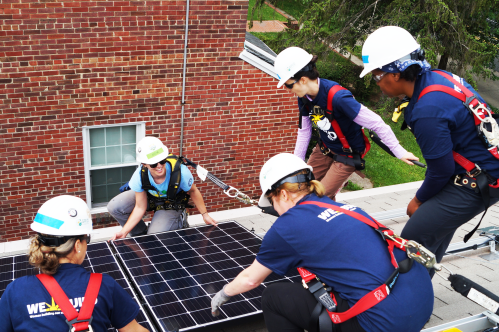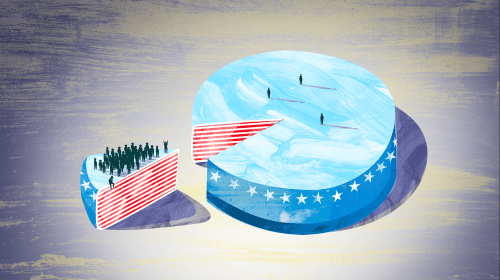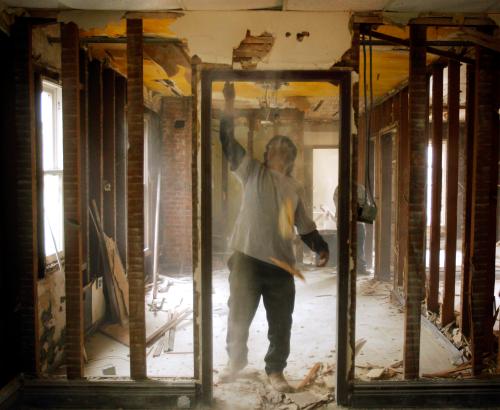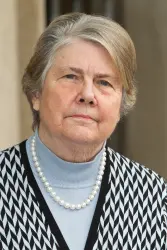This op-ed originally appeared in The Washington Post on February 21, 2020.
We live in an age of sharper identities. We are divided by race, gender, religion and geography, and our political affiliations track these differences. Republican voters tend to be white, older, male, religious and rural, while the Democratic Party draws disproportionately from a reverse demographic. As a result, the distinctively American promise of e pluribus unum — out of many, one — is in danger of slipping away.
One promising solution is universal national service. It can build bridges instead of walls, limiting toxic tribalism and social division.
What we imagine is a voluntary program, open to all. Today, the United States has some small, underfunded programs of national service, such as AmeriCorps, Volunteers in Service to America and the Peace Corps. You might be surprised to learn that three to five times as many young people apply to serve in these programs as there are openings; we are turning away a generation that wants to give back.
National service has clear benefits. It changes the young people who participate, giving them new skills and a clearer path to college and career. It helps communities, providing extra hands for dealing with natural disasters, tutoring students or improving the environment. Perhaps its greatest benefit is reducing the social distance between “us” and “them” by creating opportunities for people from different backgrounds to work together.
Congress could expand opportunities in several ways. Building on the Serve America Act passed in 2009, it could increase funds flowing to states and then nonprofit or community-serving organizations. The cost of an expansion to accommodate the approximately 250,000 Americans a year who want to serve would be about $5 billion.
Another possibility that would broaden social benefits while reducing costs would be to create what we are calling an American Exchange Program, analogous to existing foreign exchange programs. American families would voluntarily host young people during their year of service after being matched through an online platform. A similar initiative exists in San Jose, for example, where young volunteers are living with the elderly, sharing their households and forging ties that reduce divides across age, place and background. Imagine the seeds of greater understanding that could be planted by sending teenagers from blue-state big cities to spend a year in red-state small towns — and rural kids to serve for a year in cosmopolitan big cities.
A nationwide exchange program would allow older, often more affluent Americans to convert an unused bedroom in their home into an opportunity to serve. Host families would help integrate young volunteers into their local communities, bringing greater attention to their service projects. Each partner would benefit from being exposed to the backgrounds, ideas and experiences of the other.
Of course, there have always been objections to national service. When first proposed, the Peace Corps was viewed as a risky experiment; AmeriCorps was dismissed as “paid volunteering” — and an expansion of big government. Other objections are as predictable as they are baseless: that volunteering might become compulsory, create “make-work,” divert young people from their careers, involve advocacy for liberal causes or prove too expensive.
Even a cursory look at how these programs work in practice should allay these fears. AmeriCorps requires matching support from the private sector and uses low-paid volunteers to solve public problems. Compulsory national service has virtually no support among Americans and could never be enacted. AmeriCorps expressly forbids any political advocacy. It solves public challenges at low cost to taxpayers, with some programs, such as FEMA Corps, saving taxpayers millions of dollars. A review of 139 studies of national service found overwhelmingly positive results, with the benefits outweighing costs to taxpayers by more than 2 to 1.
Colleges and employers increasingly value national service as building the very skills they seek in students, workers and citizens. National service, which has been supported by nearly every president since John F. Kennedy, attracted 79 votes in the Senate for the bipartisan Serve America Act in 2009. National service in America is big citizenship, not big government.
The idea of voluntary national service remains very popular in polls, with about 4 out of 5 Americans supporting it. And focus groups with voters suggest that one thing on which they can agree is the need to end our sharp divisions. When we field-tested policy proposals in three cities in 2018, respondents received the idea of an American exchange program more enthusiastically than any other, including raising the minimum wage, retraining workers, providing new benefits and taxing the wealthy to pay for these benefits.
National service is a winning idea for these divided times. Let’s get it moving to help heal our nation.
The Brookings Institution is committed to quality, independence, and impact.
We are supported by a diverse array of funders. In line with our values and policies, each Brookings publication represents the sole views of its author(s).








Commentary
Op-edHere’s a cost-effective national service proposal that could bridge our deep divisions
March 9, 2020